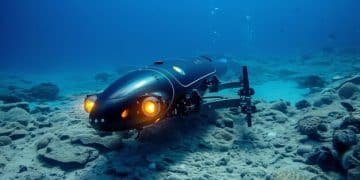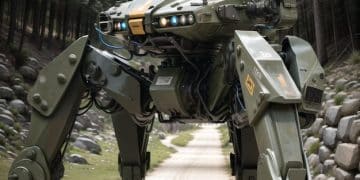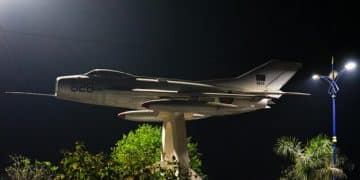Examining the Technological Challenges of Underwater Drone Warfare
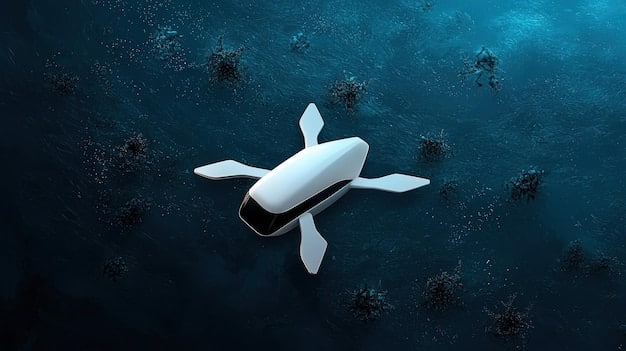
Examining the Technological Challenges of Underwater Drone Warfare reveals significant hurdles in communication, power, navigation, and autonomy. Overcoming these challenges is crucial for effectively deploying underwater drones in modern military applications.
The landscape of modern naval warfare is rapidly evolving, marked by the increasing integration of unmanned underwater vehicles (UUVs), commonly known as underwater drones. These cutting-edge machines offer unprecedented capabilities for reconnaissance, surveillance, and even offensive operations. However, the deployment of these underwater drones is not without its challenges. **Examining the Technological Challenges of Underwater Drone Warfare** reveals a complex web of issues that must be addressed to fully realize the potential of this technology.
From communication and navigation to power and autonomy, each aspect presents significant obstacles that require innovative solutions. Let’s delve into these challenges, exploring their implications and potential pathways to overcome them.
Understanding Underwater Drone Warfare
Underwater drone warfare represents a paradigm shift in naval strategy, offering a blend of stealth, precision, and remote operation. These drones can perform tasks that are either too dangerous or too costly for manned submarines, such as mine detection, harbor surveillance, and anti-submarine warfare. However, the unique environment in which these drones operate presents formidable technological hurdles. To truly understand the scope of these challenges, it’s vital to consider the core functional areas: communication, navigation, power, and autonomy.
The Strategic Advantages of Underwater Drones
Underwater drones offer numerous strategic advantages compared to traditional naval assets, including:
- Reduced Risk to Personnel: Drones can operate in high-risk environments without endangering human lives.
- Cost-Effectiveness: UUVs are generally less expensive to operate and maintain than manned submarines.
- Stealth Capabilities: Their smaller size and quieter operation make them difficult to detect.
- Versatility: They can be equipped with a wide range of sensors and payloads for various missions.
These advantages make underwater drones an attractive option for modern navies, but only if the underlying technological challenges can be effectively managed. Examining the Technological Challenges of Underwater Drone Warfare involves a deep dive into these specific areas.
In conclusion, understanding the complexities and strategic advantages of underwater drone warfare sets the stage for exploring the technological challenges that must be overcome to fully realize its potential.
Communication Challenges in Underwater Environments
Effective communication is paramount for the successful deployment of underwater drones. However, the underwater environment poses significant obstacles to traditional radio frequency (RF) communication. Water absorbs RF signals rapidly; thus, alternative methods must be employed. One of the primary methods is acoustic communication, which uses sound waves to transmit data. Acoustic communication, however, comes with its own set of limitations.
Limitations of Acoustic Communication
Acoustic communication in water is subject to several constraints:
- Limited Bandwidth: Acoustic signals have a much lower bandwidth compared to RF signals, restricting the amount of data that can be transmitted.
- Signal Attenuation: Sound waves lose energy as they travel through water, limiting the range of communication.
- Multipath Propagation: Sound waves can bounce off the seafloor and surface, creating multiple paths that interfere with each other.
- Environmental Noise: Marine life, shipping traffic, and other sources of noise can disrupt acoustic signals.
These limitations necessitate the development of advanced acoustic modems and signal processing techniques that can mitigate these effects. Additionally, researchers are exploring alternative communication methods, such as optical communication, which uses light to transmit data underwater. While optical communication offers higher bandwidth, it is limited by turbidity and distance.
Therefore, examining the technological challenges of underwater drone warfare in terms of communication requires a multifaceted approach, combining improved acoustic technologies with the exploration of alternative methods to ensure reliable data transmission.
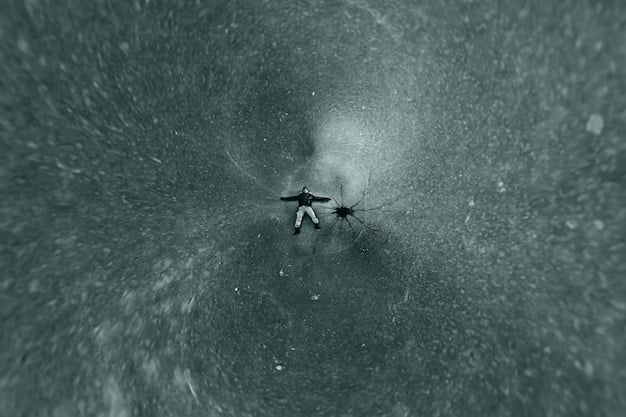
Navigation and Positioning Underwater
Accurate navigation and positioning are essential for underwater drones to perform their missions effectively. Unlike aerial drones, UUVs cannot rely on GPS signals, which do not penetrate water. Therefore, underwater drones must use alternative navigation systems, such as inertial navigation systems (INS) and sonar-based navigation.
Inertial Navigation Systems and Their Limitations
Inertial navigation systems use accelerometers and gyroscopes to track the drone’s movement and orientation. However, INS errors accumulate over time, leading to a drift in the estimated position. To mitigate this drift, underwater drones often use sonar-based navigation techniques, such as:
- Doppler Velocity Logs (DVL): These sensors measure the drone’s velocity relative to the seafloor.
- Long Baseline (LBL) Navigation: This method uses a network of acoustic transponders deployed on the seafloor to triangulate the drone’s position.
- Simultaneous Localization and Mapping (SLAM): SLAM algorithms allow the drone to map its environment and localize itself within the map simultaneously.
Each of these methods has its own limitations. DVLs require a clear line of sight to the seafloor, LBL navigation requires a pre-existing infrastructure, and SLAM algorithms can be computationally intensive. Integrating these different navigation techniques into a robust and reliable system is a significant challenge when examining the technological challenges of underwater drone warfare, including the need for improved sensor fusion algorithms and more efficient processing hardware.
Powering Underwater Drones: A Critical Constraint
Powering underwater drones is another significant technological challenge. UUVs require a reliable and long-lasting power source to operate for extended periods. Traditional batteries have limited energy density, which restricts the range and endurance of underwater drones. Therefore, developing advanced power sources is critical for improving the capabilities of these vehicles.
Exploring Advanced Power Solutions
Researchers are exploring several advanced power solutions, including:
- Lithium-ion Batteries: While they offer higher energy density compared to traditional batteries, they still have limitations in terms of capacity and safety.
- Fuel Cells: These devices convert chemical energy into electrical energy and offer higher energy density compared to batteries. However, they require a supply of fuel, such as hydrogen or methanol.
- Thermoelectric Generators: These generators convert heat into electricity and can be powered by the temperature difference between the drone and the surrounding water.
Each of these solutions has its advantages and disadvantages. Lithium-ion batteries are relatively mature and widely available, but they have limited energy density. Fuel cells offer higher energy density, but they require a complex fuel supply system. Thermoelectric generators are environmentally friendly, but they have low efficiency. Addressing these trade-offs is vital when examining the technological challenges of underwater drone warfare. Finding the optimal power solution depends on the specific mission requirements and the available technology.
Optimizing power consumption through efficient system design and advanced energy management techniques is also crucial. This includes minimizing drag, improving the efficiency of propulsion systems, and using low-power sensors and electronics.
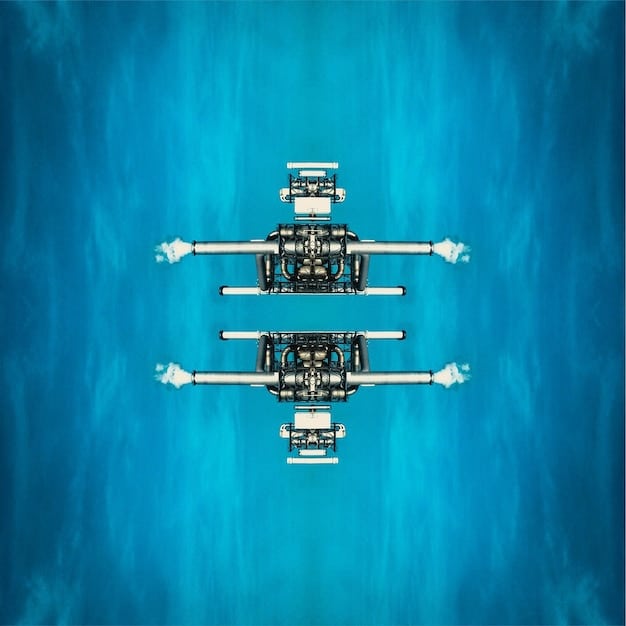
Autonomy and Artificial Intelligence in UUVs
Autonomy is a key feature of underwater drones. It enables them to perform complex tasks without direct human control. However, achieving true autonomy in underwater environments is a significant technological challenge. UUVs must be able to navigate, make decisions, and respond to unexpected events autonomously. This requires advanced artificial intelligence (AI) and machine learning (ML) algorithms.
Challenges in Developing Autonomous UUVs
Developing autonomous UUVs involves several challenges:
- Environmental Uncertainty: The underwater environment is highly unpredictable, with varying currents, visibility, and obstacles.
- Limited Sensor Data: UUVs have limited sensor data compared to land-based or aerial robots, making it difficult to perceive their surroundings.
- Computational Constraints: UUVs have limited processing power and memory, restricting the complexity of AI algorithms that can be deployed.
To address these challenges, researchers are developing AI algorithms that can handle uncertainty, fuse data from multiple sensors, and operate efficiently on limited hardware. These algorithms include:
The integration of these algorithms into a seamless and reliable autonomous system is a major focus when examining the technological challenges of underwater drone warfare. It requires careful consideration of the trade-offs between performance, accuracy, and computational cost.
Future Trends and Innovations
The field of underwater drone warfare is rapidly evolving, with new technologies and innovations emerging all the time. Some of the key trends to watch include advancements in:
These advancements will pave the way for more capable and versatile underwater drones, which can perform a wider range of missions in more challenging environments. As technology advances, so too will the importance of examining the technological challenges of underwater drone warfare.
In conclusion, the future of underwater drone warfare is bright, with ongoing research and development efforts promising to overcome many of the current technological challenges. By addressing these challenges, navies will be able to unlock the full potential of underwater drones and gain a significant strategic advantage.
| Key Aspect | Brief Description |
|---|---|
| 📡 Communication | Acoustic methods face bandwidth and interference challenges. |
| 🧭 Navigation | GPS denial requires INS and sonar integration. |
| 🔋 Power | Limited energy density restricts mission endurance. |
| 🤖 Autonomy | AI must handle uncertainty and limited sensor data. |
Frequently Asked Questions
The main challenges include limited bandwidth, signal attenuation, and interference from marine life and other noise sources. Acoustic communication is the primary method, but it has inherent limitations.
UUVs use inertial navigation systems (INS) combined with sonar-based techniques like Doppler Velocity Logs (DVL) and Long Baseline (LBL) navigation to estimate their position.
Researchers are investigating lithium-ion batteries, fuel cells, and thermoelectric generators to increase the energy density and operational endurance of UUVs when examining the technological challenges of underwater drone warfare.
Current UUVs can perform some tasks autonomously, but true autonomy is limited by environmental uncertainty, data limitations, and computational constraints. AI and machine learning are improving their capabilities.
By identifying the key hurdles, research efforts can be focused on developing innovative solutions in areas such as communication, navigation, power, and autonomy, ultimately enhancing the effectiveness of UUVs.
Conclusion
Examining the Technological Challenges of Underwater Drone Warfare reveals a landscape of complex obstacles and promising innovations. Overcoming limitations in communication, navigation, power, and autonomy is crucial for unlocking the full potential of underwater drones.
As technology continues to evolve, the strategic advantages offered by UUVs will become even more pronounced, reshaping the future of naval warfare and underwater operations. Ongoing research and development efforts are essential for addressing these challenges and realizing the full capabilities of these advanced machines.
